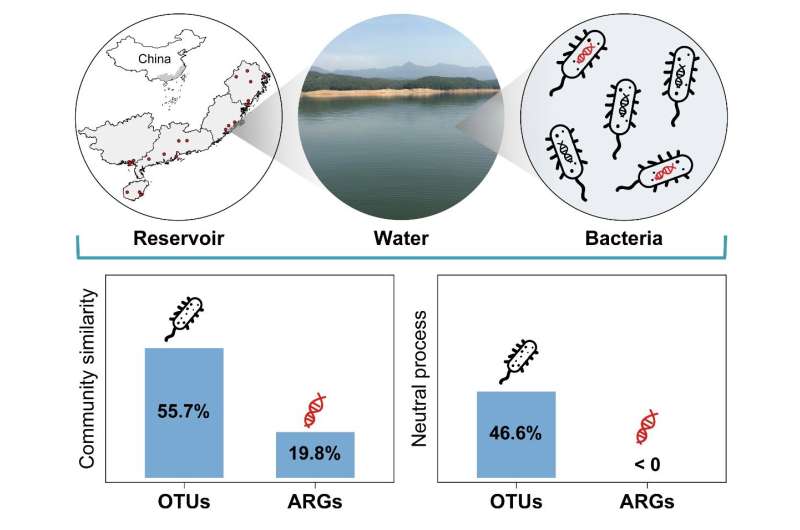Biogeographical patterns of bacterial communities and their antibiotic resistomes in inland waters of Southeast China

A recent study by scientists from the Chinese Academy of Sciences uncovered the distinct biogeographical patterns of bacterial communities and ARG (antibiotic resistance genes) profiles in inland waters of southeast China under low-anthropogenic impact at a large scale.
The study, led by Professor Yang Jun from the Institute of Urban Environment (IUE) of the Chinese Academy of Sciences, drew the conclusion after investigating the biogeographical patterns of bacterial communities and their ARG profiles in 24 reservoirs across southeast China along a distance gradient of 1,800 km.
Antibiotic-resistant bacteria (ARB) and antibiotic resistance genes (ARGs) are ancient and common in the environment. Both have been regarded as emerging pollutants, as they can threaten environmental and human health worldwide.
In particular, pollution with multi-resistant ARB and mobile ARGs that are coupled with additional resistance to various pollutants (including antibiotic residues, biocides and heavy metals) on the same MGE has made aquatic ecosystems crucial hotspots for the acquisition and dissemination of both ARB and ARGs in human dominated regions.
Freshwater ecosystems, as important sources of drinking water, can provide natural settings for the proliferation and dissemination of bacteria and ARGs. The "One Health" concept further emphasizes the importance of monitoring the large-scale dissemination of ARGs. However, knowledge about the geographical patterns and driving mechanisms of bacterial communities and ARGs in natural freshwater environments is limited at large-scale.
In their study, Yang's team found that the composition of both bacterial communities and ARG profiles exhibited a significant distance-decay pattern. However, ARG profiles displayed larger differences among different waterbodies than bacterial communities, and the relationship between bacterial communities and ARG profiles was weak.
The biogeographical patterns of bacterial communities were simultaneously driven by stochastic and deterministic processes, while ARG profiles were not explained by stochastic processes, indicating a decoupling of bacterial community composition and ARG profiles in inland waters under relatively low-human-impact at large-scale.
"This study improved our understanding of ARG distribution in inland waters with emphasis on drinking water supply reservoirs, therefore providing the much-needed baseline information for future monitoring and risk assessment of ARGs in drinking water resources," said Yang.
The study, titled "Biogeographical Patterns of Bacterial Communities and Their Antibiotic Resistomes in the Inland Waters of Southeast China" was published in Microbiology Spectrum.
More information: Peiju Fang et al, Biogeographical Patterns of Bacterial Communities and Their Antibiotic Resistomes in the Inland Waters of Southeast China, Microbiology Spectrum (2022).
Provided by Chinese Academy of Sciences



















